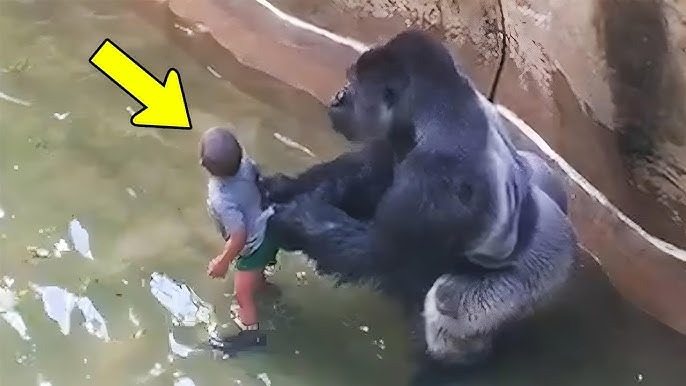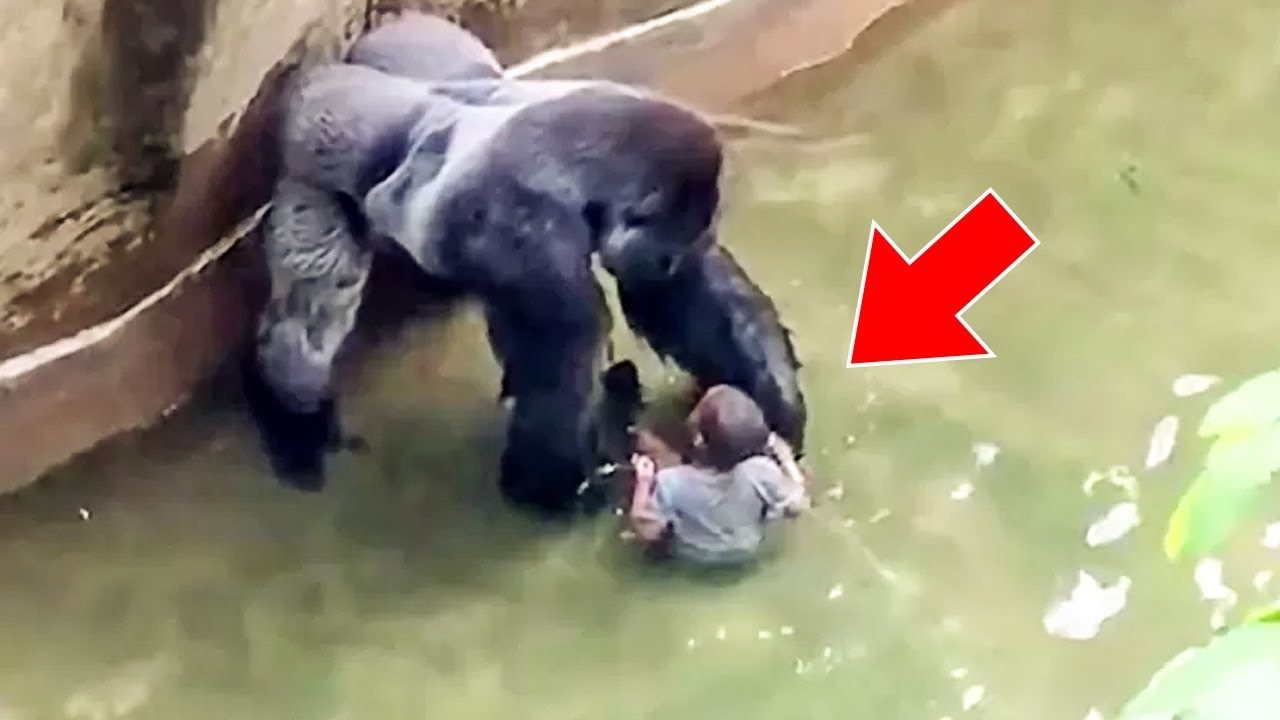On August 19, 1996, a routine visit to Brookfield Zoo in Illinois took an unexpected and dramatic turn when a young child fell nearly six meters into the Western Lowland Gorilla exhibit. The three-year-old had slipped past a protective barrier and was knocked unconscious by the impact, leaving stunned visitors fearing a tragic outcome.
While the crowd looked on in alarm, an unusual moment of interspecies empathy unfolded. Binti Jua, an eight-year-old female gorilla, approached the unconscious boy while carrying her infant daughter on her back. Displaying calmness and maternal care, she gently lifted the child and carried him to an access point where zoo personnel could safely intervene. The scene was recorded on video and later drew widespread attention for the gorilla’s composed and protective behavior.
Medical assessments confirmed that the boy had sustained a broken hand and cuts to his face, but he was discharged from the hospital after four days with no lasting injuries. His and his mother’s identities were never released to the public.
Binti Jua’s instinctive response challenged long-standing assumptions about animal behavior, highlighting the emotional complexity and empathetic capabilities of gorillas. Her name, which means “daughter of sunshine” in Swahili, quickly became a symbol of kindness and the unexpected bridges that can form between humans and animals.
The incident remains one of the most compelling examples of animal compassion recorded in a zoo setting and continues to spark discussions about empathy, conservation, and the emotional depth of wildlife.


 Discuss
More news
Discuss
More news


